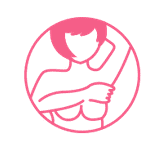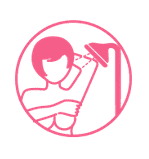Safeguard your breast health: Breast screenings
The average woman depending on her racial ethnicity has a one in 6~9 chance of developing breast cancer during her lifetime, based on a life expectancy of 85 years. Studies have shown that regular screening of women with no symptoms has decreased the number of women who die from breast cancer by approximately 45 percent.
Changes in breast screening guideline
Traditionally, recommendations for screening have been standardised for all women irrespective of their risk groups. However today, screening guidelines for breast cancer for an individual woman should take into account those with an average risk versus those with increased risk because of familial or genetic predisposition.
Breast screening guidelines for the ‘community’ however needs to take into account not only the relative risks but there is a need to ensure that a high quality, comprehensive assessment programme. When breast screening was introduced in the NHS in 1987 (the Forrest Report), the recommendation was that assessment should be carried out by multidisciplinary teams. Since then, guidance has been published on the organisational support that this requires and a number of standards have been included in breast screening quality assurance guidelines to ensure that this assessment is carried out satisfactorily. The present guidance sets out the minimum standards for a breast screening assessment. The aim of an assessment is to obtain a definitive and timely diagnosis of all potential abnormalities detected during screening.
This is best achieved by using ‘triple assessment’, comprising imaging (usually mammography and ultrasound), clinical examination and image-guided needle biopsy for histological examination where indicated. Cytology should no longer be used alone to obtain a non-operative diagnosis of breast cancer [1].
One of the best things you could do to protect and improve your health is to stay informed. Marina Medical provides regular e-newsletter on health information, healthy living tip etc. Click the below button to subscribe to our newsletter.
Get In Touch
For any enquiry, please call +852 3420 6622, Whatsapp +852 5228 0810, or info@marinamedical.hk









